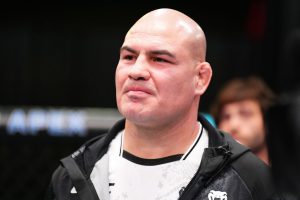
Last week, Black Belt brought you a look at the career of Brazilian jiu-jitsu champion JT Torres as he prepares to defend his title at the upcoming ADCC Submission Fighting World Championships. This week, Torres shares with Black Belt some of his favorite training tips to improve your grappling game…
Unlike a lot of elite Brazilian jiu-jitsu competitors, Jonathan “JT” Torres isn’t a specialist. Though he excels in certain areas of the sport like takedowns and getting an opponent’s back, he isn’t known for always hunting leg locks, there is no signature choke named after him, nor does he specialize in any particular style of unorthodox guard play. Rather, he simply calls his style “straight up jiu-jitsu.”
“To me, that means I’m going to come straight at you from the start. I’m not going to try and win on a last second sweep or look to edge out a decision,” said the two-time defending ADCC world champion. “Instead, I’m going to set the tone of the match. I’m going to try and set the pace from the very beginning.”
Torres, who’ll look to become the first American to “three-peat” by claiming his third straight 77 kg title at next week’s ADCC Submission Fighting World Championships tournament in Las Vegas, generally seeks to impose his will early in any match, even under the curious ADCC rule set where no points, only submissions, are awarded in the first few minutes of the bout. To do this, he relies on an all-around game grounded in rock solid fundamentals and a fanatical work ethic. Though he says not every jiu-jitsu practitioner needs to show the same obsessiveness that lead to his earning his BJJ black belt in just 4 years, a certain level of dedication is still necessary.
“You don’t have to be obsessed to just be good but you have to respect the art. You have to put in the mat time in order to get good at this,” he said.
Of course a bit of obsessing doesn’t hurt either and Torres said a key for his own improvement has always been thinking about the game away from the mats, particularly in doing positive visualizations where he’ll imagine himself achieving the various goals he sets for himself in jiu-jitsu.
On the mats though, if you want to develop that “straight up” style of BJJ that has made him a champion, Torres said you’ll need to start with the fundamentals. And by “fundamentals” he does mean the most basic of movements.
Though everyone wants to learn the hot, fancy new submission hold they just saw on Youtube, Torres suggests anyone below the rank of blue belt concentrate on things like break falls and the basic side control, mount and back mount methods, as well as learning the essential escapes from all these positions.
Home | Essential BJJ Online – Essential Jiu Jitsu Online
“Don’t focus on submissions yet,” he said. “You’re better off just developing those fundamental movements and positions.”
Contrary to the view many jiu-jitsu schools take where everyone, even white belts, spend the majority of their time live rolling with sparring partners, Torres said practitioners at the beginning levels should spend about 70% of their time doing drills to master these fundamentals and only about 30% of their time sparring. Of course, as they advance up the ranks hitting blue or purple belt, this will start to switch around a bit where sparring begins to play a more predominant role. But in Torres’ opinion, it’s better to have developed a solid positional base before spending all your training time rolling with opponents.
And if there’s any one, single technique he’d recommend to all aspiring, young jiu-jitsu practitioners above the rest, it would be the simple hip escape, which he calls foundational to much of BJJ. Make no mistake, there are no shortcuts for developing the level of skill needed in these basic motions if you want to reach the higher levels of jiu-jitsu. And as you progress, the amount and intensity of the work you put in just increases.
Torres said when he was coming up the ranks, in order to improve, he would compete virtually every single weekend in grappling tournaments. While he added that the amount of competition you do depends on what your own specific goals are – students just looking to stay in shape and learn some basic self-defense will obviously have different needs than people with the dream of becoming a world champion – even those practitioners who don’t have much interest in tournaments can still draw some benefits from competing at least once in their martial arts career. The experience of being forced out of your comfort zone will prove an invaluable one.
“You should always keep an open mind in jiu-jitsu,” said Torres. “People get caught up in things like self-defense versus competition or doing gi training versus no-gi training and arguing which is better. But regardless of what you prefer, you need to be open to trying all of it and learning from all of it.”
Brazilian jiu-jitsu, Bjj, Bjj grappling
Black Belt Magazine
Bitcoin
Ethereum
Monero

Donate Bitcoin to The Bitstream
Scan the QR code or copy the address below into your wallet to send some Bitcoin to The Bitstream

Donate Ethereum to The Bitstream
Scan the QR code or copy the address below into your wallet to send some Ethereum to The Bitstream

Donate Monero to The Bitstream
Scan the QR code or copy the address below into your wallet to send some Monero to The Bitstream
Donate Via Wallets
Select a wallet to accept donation in ETH BNB BUSD etc..












